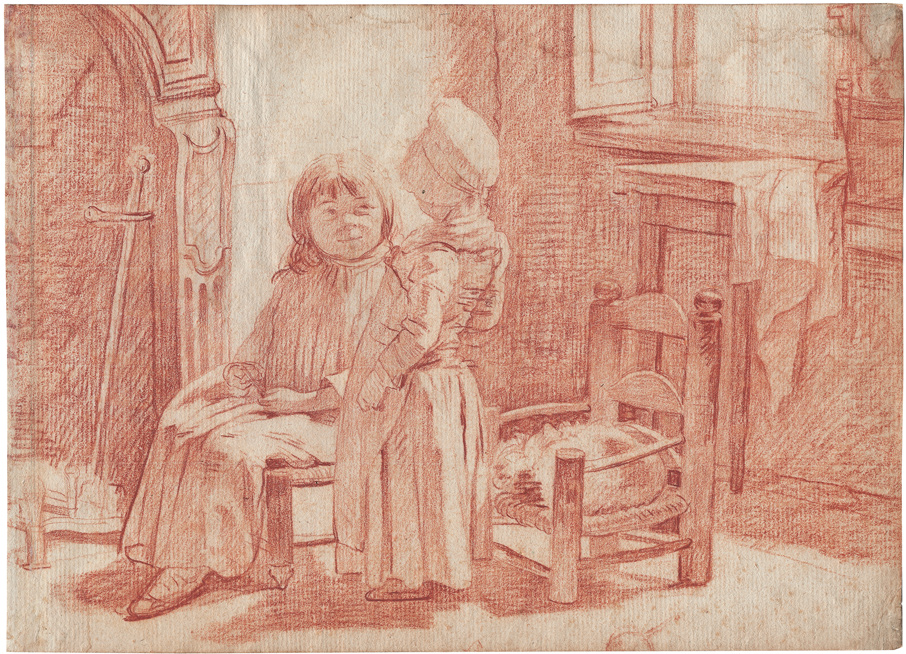Loading the page ...
Martin Drolling
(1752 Oberbergheim – 1817 Paris)
Interior with the son of the artist by a fireplace and a small girl; verso, two studies of a sleeping cat on a child’s chair. Red chalk on brownish laid paper. 19.7 x 27.2 cm. Ca. 1795.
Martin Drolling received his first artistic training in the Alsatian Sélestat and in Strasbourg before moving to Paris in 1768 for further studies. He benefited from the support of Maurice Quentin de la Tour and trained himself as a young man by copying the Dutch and Flemish masters of the seventeenth century in the Louvre, gaining recognition from his contemporaries. Additionally, Drolling was active as a portrait painter and worked from 1798 until 1806 as figure painter in the Parisian porcelain manufactory of Dihl et Guérhard. From 1802 until 1813, he was also employed in the renowned Sèvres Manufactory, where, as an expression of his fame, he signed his works with his full name.
As a painter, Drolling was never selected as a member of the Académie Royale. He chose instead to remain a small master and his occasionally cloying genre scenes of bourgeois life matched the taste of the period. Drolling’s frequent participation from 1793 in exhibitions of the Salon du Louvre confirms the popularity of his domestic scenes and interiors, executed in a very careful, polished technique. Numerous engravings and lithographs after his inventions highlight Drolling’s acceptance in post-revolutionary Parisian society. No less a person than the esteemed writer Honoré de Balzac mentions the artist several times in a complimentary fashion.
Drolling was a versatile and talented draftsman, and his carefully observed studies of bourgeois life reflect those of fellow Parisian artist Louis Léopold Boilly, whose technical brilliance, however, surpassed that of Drolling. Our sheet depicts a modest domestic interior, most likely the living room of the artist. The round face and big cheeks of the young boy sitting by the fireplace are easily recognizable as the features of Drolling’s eldest son, Michel-Martin (1786–1851 Paris), because of the similarity to the child depicted in the lovely painting Portrait of the Son as a Drummer. Following his training under Jacques-Louis David, Drolling le fils was to become a painter himself, succeeding his father and achieving even greater fame. The boy in the drawing would appear to be between eight and ten years old, therefore dating the drawing to approximately 1795. The identity of the small girl is unknown, and could not be Michel-Martin’s sister, Louise Adéone, who was only born in 1797. A cat naps on the child’s chair behind her. This lovingly observed scene is imbued with intimacy and warmth, and is a delightful artistic document from the private life of the artist.
